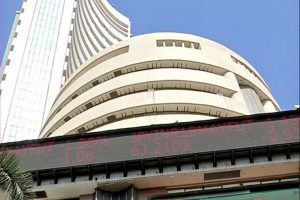Last Monday, two interesting news items caught attention. First, the former chief minister of Jharkhand, Champai Soren, an influential tribal leader from the Jharkhand Mukti Morcha, joined the BJP, swelling the number of its imported leaders. Champai Soren got miffed when the current chief minister, Hemant Soren, allegedly involved in a scam, came out on bail and took back the chief ministership. Champai remained chief minister for only a few months. The BJP took advantage of the opportunity to grab him. The saffron party is working on two levels to expand.
One is to import well-known leaders from other parties, and the second is to recruit new members. This was the other interesting news – announcement of a new drive to draw in new members. BJP plans to recruit 100 million new state members on a parallel track. The drive will be in two phases: September 2 to 25 and October 1 to 15. The BJP is already the world’s largest party, with 180 million members. The Grand Old Party, Congress, has 130 million members. Recent developments can be seen from two perspectives: the BJP’s success in attracting VVIPs and its deliberate expansion programme. According to the National Election Watch-ADR, critical reasons for defections and party switching include the absence of value-based politics, greed for money and power, reward of political positions, and lack of efficient, honest, and credible leaders. Champai is not the only one whom the BJP has lured. In the last decade, 13 former chief ministers, mainly from Congress, have joined the BJP. Importing well-known leaders from other parties is easier than grooming new leaders – Assam chief minister Himanta Biswa Sarma, imported from the Congress, is a classic example. Sarma has become the go-to man in the northeast.
Advertisement
Over the last decade, the BJP has seen significant growth in its organisational footprint. In the 1980s, upper middle-class, urban Hindus primarily supported the BJP. It has since built a broader political base, indicating its increasing influence. Between 2014 and 2019, well over 100 million people joined nationwide. Eighty thousand leaders and workers from various parties have joined the BJP, which aims to recruit about 100,000 leaders at national and district levels. In the last decade, many influential Congress leaders, including former chief ministers and ministers, either shifted to the BJP, revealing the party’s dominance, or sought other alternate paths. Notable leaders who left the Congress include Himanta Biswa Sarma, Ghulam Nabi Azad, Captain Amarendra Singh, Kapil Sibal, Jitin Prasada, R.P.N. Singh, Milind Deora, and Jyotiraditya Scindia.
Former Maharashtra chief minister Ashok Chavan, Ritesh Pandey, Sangita Azad, and others have recently joined the BJP. Why do they defect? These leaders fear becoming politically irrelevant when their party loses power. By aligning with the dominant BJP, they hope to gain control. They also seek to secure a political future for their children. The BJP gained the most from members switching sides, while the Congress suffered the most since 2014. There is a concern that the BJP will tempt legislators to join their party. According to an ADR analysis, many leaders from other parties have joined the BJP. Twenty two per cent of re-contesting candidates who switched parties joined the BJP, followed by 10 per cent joining the Congress and 6 per cent joining the BSP. Over the past decade, the BJP has attracted several leaders from other parties. This strategy has worked well, contributing to the rise of several leaders. Why does the BJP welcome these defectors? There are three key reasons: First, it weakens the party from which the defection occurs. Second, it allows the BJP to gain known leaders from established parties, strengthening its ranks.
Third, given the BJP’s need for developed second-rung leaders or leaders at the state and district levels, it is easier to absorb imported men and women, to showcase the party’s strength. It is not as if leaders have not left the BJP. Some, like Kalyan Singh, Shankar Singh Vaghela, and Yediyurappa (all chief ministers), launched their parties but returned to the BJP when they failed. The BJP’s deeply ideological glue holds it together. The BJP’s long-time loyal members are unhappy when newcomers get good positions while they despite having been faithful do not. This has happened in the past. During the late AB Vajpayee’s leadership, the party could only accommodate some, and others left.
While the party has been expanding, its leadership is still dominated by the upper castes. The BJP has many strengths but receives criticism for its limiting ideology, aggressive attitude, complacency, and arrogance. The BJP’s upcoming membership drive will be tested in the post-2024 poll period. Through this drive, the BJP collects data about its members, including their caste, gender, age, residence, and other details. Top BJP leaders want to achieve a “Congress-free India,” but it may be challenging. You cannot get rid of a 140-year-old party in a day. The Congress showed signs of a comeback in the 2024 Lok Sabha polls. The BJP must avoid repeating the mistakes of the Congress to stay in power.











